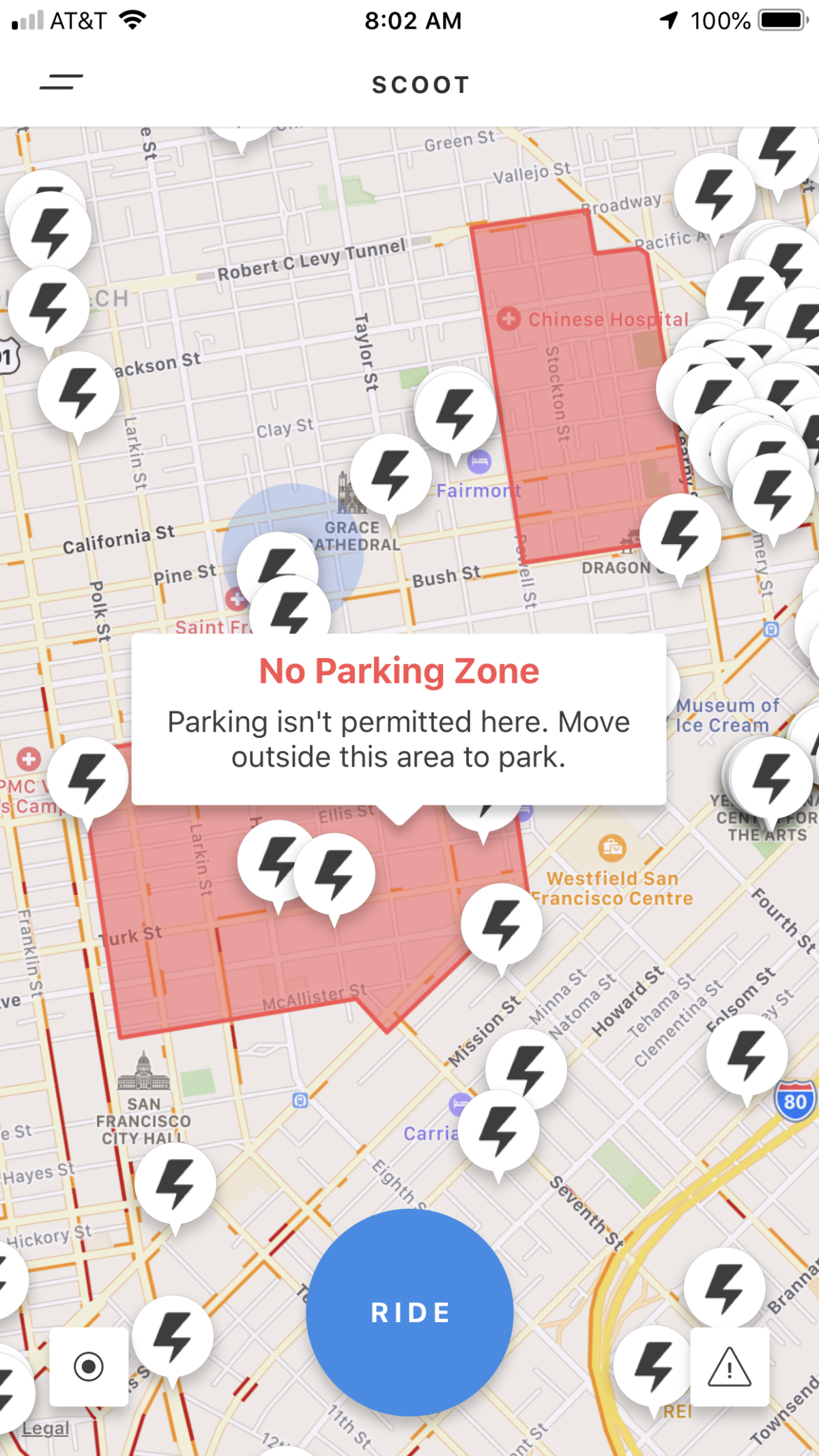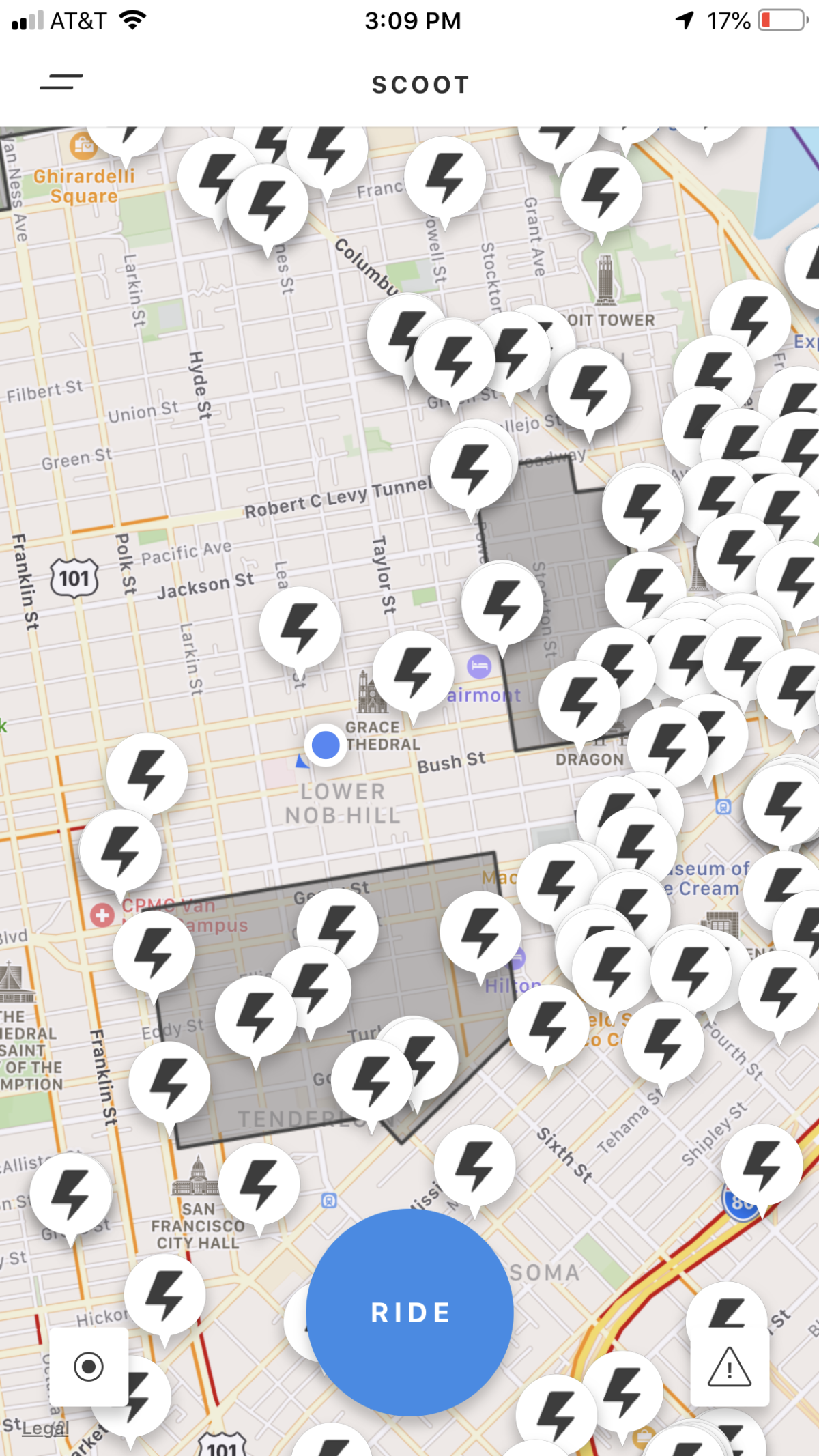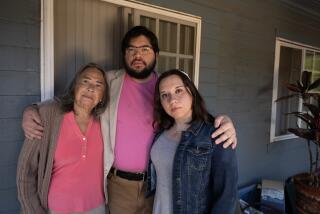Scooter startup says needy communities in San Francisco asked to be excluded

- Share via
In defense of its practice of excluding two of the San Francisco’s neediest neighborhoods, San Francisco-based mobility company Scoot says local community leaders and organizations asked it not to allow riders to park their scooters in those areas. Scoot Chief Executive Michael Keating said community leaders in the Tenderloin and Chinatown expressed concerns about congestion in those areas because both neighborhoods have “narrow, crowded sidewalks.”
“While we believe there is a way to have our Kicks park on many of those sidewalks without impeding pedestrians, we wanted to be respectful of neighbors who aren’t so sure,” Keating said in a blog post. “So we listened and responded to the community and have designated some sidewalks in both neighborhoods as no-parking zones until, together with community members, we come up with a solution that takes into account their specific needs and concerns.”
Keating’s response came a day after The Times revealed the company, acquired by Santa Monica-based Bird in June, was prohibiting riders from parking their scooters in the Tenderloin and parts of Chinatown, with the no-parking zones marked in its app by a red border. Both neighborhoods were designated by the city as among the seven so-called communities of concern or predominantly low-income and diverse areas that the San Francisco Municipal Transportation Agency required scooter companies to prioritize when dolling out permits to operate in 2018.
Scoot will continue to treat those areas as no-park zones, although it changed the color of the lines on its map from red to black.
The company initially declined to offer reasons for the geographic blocks, only saying it was “in compliance with the current kick scooter pilot program and are exceeding in areas such as Community Plan members.”

In his post on Medium, Keating suggested the zones were a concession to those communities, despite the SFMTA’s expressed requirement that its communities of concern be served at least as well as other areas.
“When we expanded the parking area for our Kick scooter service a few months ago, we began to hear concerns from the community and neighborhood organizations we have maintained relationships with for years,” Keating wrote. “Specifically, organizations and community leaders in Chinatown and the Tenderloin wondered what would happen if our scooters started parking on their sidewalks.”
One of those organizations, the Chinatown Transportation Research and Improvement Project, confirmed in a letter to The Times that it asked Scoot to restrict scooter parking in Chinatown, especially along Stockton Street, where vegetable stands and tourists compete for space on sidewalks narrower than 6 feet. The group’s co-chairs, Jon Hee and Queena Chen, said they had also asked scooter fleet operator Skip and Uber-owned e-bike provider Jump to restrict parking there, but neither has done so.
However, several other San Francisco neighborhoods have expressed a variety of concerns to the company about the scooters, according to a Scoot spokesperson. Asked why the companies chose to exclude only Chinatown and the Tenderloin, the spokesperson cited the crowded sidewalks in those areas.
In April, the SFMTA chastised the company for not sufficiently fulfilling its promise to reach underserved communities and residents. At the time, Scoot customers were found to be predominantly white men who have a household income of $100,000 or more, according to an SFMTA survey. The company also had only 68 customers enrolled in its low-income program, which the SFMTA mandated for companies that operated scooters in the city create.
Today, Keating wrote, the company has over 600 customers enrolled.
“I will be the first to admit that we didn’t get everything right at first,” he said.







